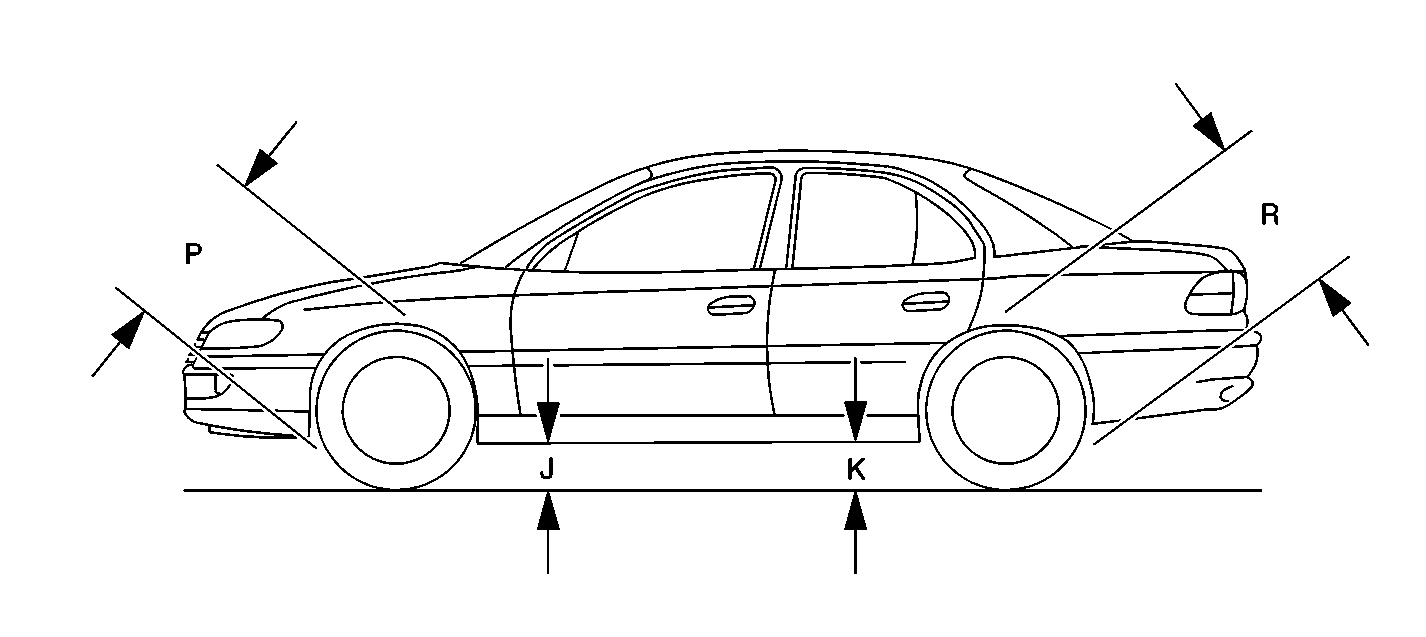Trim Height Measurements

Incorrect trim heights can cause bottoming out over bumps. Incorrect trim heights can cause possible damage to the suspension components and symptoms similar to those produced when there is a problem with the wheel alignment. Check the trim heights when diagnosing suspension complaints and before checking the wheel alignment.
Perform the following before measuring the trim heights:
- Set the tire pressures to the pressure shown on the tire placard. The tire placard is located on the driver's door.
- Check the fuel level.
- Add additional weight if necessary to simulate a full tank.
- Place the front seats in the full back position.
- Make sure the rear compartment is empty except for the spare tire and the jack and simulated fuel load.
- Make sure the vehicle is on a level surface, such as an alignment rack.
- Close the doors.
- Close the hood.
- Close the rear compartment lid.
All dimensions are measured vertical to the ground. Trim heights should be within 10 mm (0.4 in) to be considered correct.
Measuring J and P Dimensions
- Lift the front bumper of the vehicle up approximately 38 mm (1.5 in). Gently remove hands. Let the vehicle settle.
- Push the front bumper down approximately 38 mm (1.5 in). Gently remove hands. Let the vehicle settle.
- Measure the J and P dimensions.
- Replace the front springs to correct the front trim heights.
The P dimension, this is the distance from the ground to the top of the wheel well.
Measuring K and R Dimensions
Repeat procedure as described for measuring J and P dimensions using the rear bumper and measuring K and R at the appropriate locations. The automatic level control (ALC) system must be operative while taking measurements.
The R dimension, this is the distance from the ground to the top of the wheel well.
